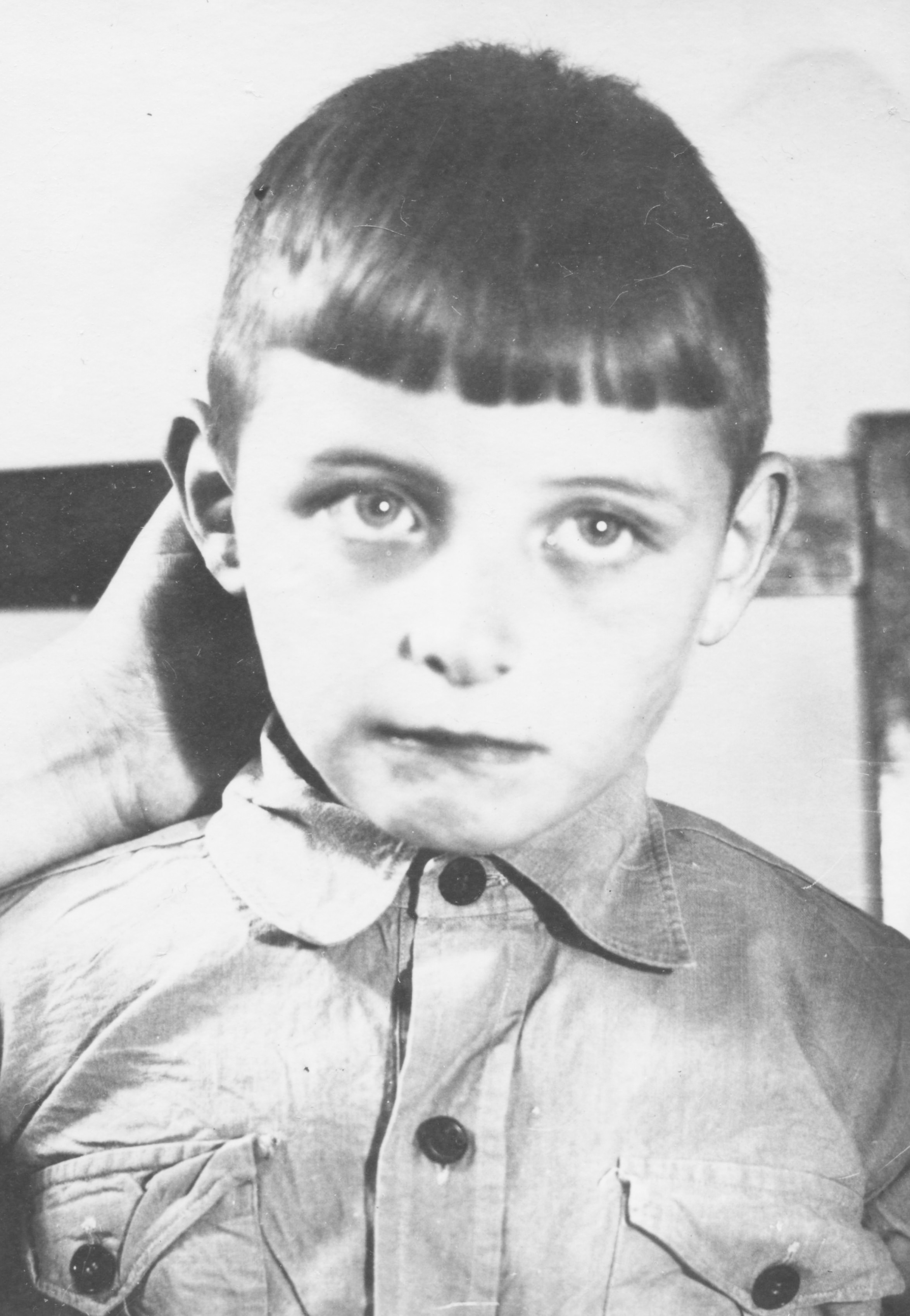Search for Names, Places and Biographies
Already layed Stumbling Stones
Suche
Kurt Walter Lohmann * 1930
Holstentwiete 23 (Altona, Ottensen)
HIER WOHNTE
KURT WALTER
LOHMANN
JG. 1930
EINGEWIESEN 1937
ALSTERDORFER ANSTALTEN
"VERLEGT" 10.8.1943
HEILANSTALT MAINKOFEN
ERMORDET 14.2.1945
Kurt Walter Lohmann, born 14.6.1930 in Altona, admitted to the Alsterdorf Asylum (now Evangelische Stiftung Alsterdorf) on 9.6.1937, "transferred" to the "Sanatorium and Nursing Home Mainkofen” ("Heil- und Pflegeanstalt Mainkofen") near Passau, on 10.8.1943, died there on 14.2.1945.
Holstentwiete 23, Altona-Altstadt
Kurt Walter Lohmann was born on 14 June, 1930 in the municipal maternity hospital in Bülowstraße in Altona, which was still independent at that time. He was the son of Heinrich Lohmann, a metal grinder, born on 22 Dec. 1904 in Itzehoe, and his wife Martha, née Kneisel, born on 1 Jan. 1903 in Neuendorf in Mecklenburg. According to the birth register entry, the family then lived at Palmaille 128 in Altona-Altstadt. Kurt Walter Lohmann was the youngest of three children. His brother Helmuth was born on 9 Dec. 1926, his brother Heinrich on 28 Dec. 1928.
Kurt Walter Lohmann suffered from deafness. He is said to have learned to walk at the age of one and a half and to speak at the age of four. At the age of two, he had fallen down the stairs several times. Between the first and second year of life, it became apparent that he was not developing age appropriate.
A handed down anamnesis form from the Altona Health Department dated April 1937, said that Kurt Walter Lohmann could neither recognize letters, nor count. He was diagnosed with "congenital idiocy". ("Idiocy" is an outdated term for a severe form of intelligence impairment).
On 9 June 1937, the family now lived at Holstentwiete 22 in Altona, Kurt Walter Lohmann was admitted to the Alsterdorf Asylum (Alsterdorfer Anstalten, now Evangelische Stiftung Alsterdorf). We do not know who arranged the admission. The institution's doctor, Dr. Kreyenberg, informed the Hamburg welfare authority shortly afterwards: "The patient suffers from a higher degree of imbecility. He needs help with personal hygiene and must be fed most the time. Occasionally he is quite wild and has to be restrained, but mostly he is calm. The child does not understand any demands given by the nurses, but he is interested in his surroundings and plays. He does not state his needs. He speaks only a few unintelligible chunks."
At the end of 1937 Kurt Walter was described as an "always amused and content pupil who can occupy himself for hours with a few building blocks". This description was essentially repeated until the end of 1942. Kurt Walter Lohmann, however, was now described as a "complete fosterling" who had to wear a protective jacket almost all day because he touched and smelled everything and pounced on food at mealtimes. (With a "protective jacket", colloquially "straitjacket", an extensive restriction of movement could be enforced.).
After the Alsterdorf Asylum had suffered damage during the heavy Allied air raids on Hamburg at the end of July/beginning of August 1943 ("Operation Gomorrha"), the director of the institution, SA member Pastor Friedrich Lensch, took advantage of this situation, asking the Hamburg health authorities for permission to remove about 750 residents made homeless by the bombings. As a result, between 7 and 16 Aug. 1943, three transports with a total of 469 girls, boys, women and men left Alsterdorf in different directions, including a transport with 113 men, youths and boys on 10 Aug. 1943 with the destination "Sanatorium and Nursing Home Mainkofen" (Heil- und Pflegeanstalt Mainkofen) near Passau. Among them was Kurt Walter Lohmann.
The Mainkofen Sanatorium and Nursing Home, a psychiatric hospital in the pre-National Socialist era, had been systematically developed into a killing facility. Until August 1941, during the first phase of the "euthanasia" murders, people were deported from there to the killing facility Schloss Hartheim near Linz and murdered with gas. 606 of them are known by name. Later the patients were murdered in Mainkofen itself, by food deprivation under the "Bavarian Hunger Decree" (starvation diet, meat- and fat-free diet, referred to in Mainkofen as "3-b diet"), nursing neglect and overdosed medication. According to the state of knowledge in 2016, 760 Mainkofen inmates died of malnutrition. The alleged cause of death was in particular intestinal catarrh, tuberculosis, pneumonia or pulmonary tuberculosis.
74 of the 113 Alsterdorf boys and men who arrived at Mainkofen on 12 Aug. 1943, had died by the end of 1945. As in other death camps, "pulmonary tuberculosis" repeatedly appeared as the cause of death, forty times in the case of those 74 patients from Alsterdorf "Intestinal catarrh" was named as the cause of death fifteen times. Only 39 patients from Alsterdorf survived the year 1945, 15 adults and 24 children or adolescents up to the age of 21. The surviving patients were transferred back to Alsterdorf on 19 Dec. 1947.
Kurt Walter Lohmann survived in Mainkofen for one year and a half. However, his patient file does not contain any records of how he fared in the foreign environment. According to the surviving coroner's certificate, the fourteen-year-old boy died of pulmonary tuberculosis on 14 Feb. 1945. Kurt Lohmann's mother was informed of her son's passing on 20 Feb. 1945 by a short telegram: "Lohmann Kurt died. Funeral held today."
It can be assumed that Kurt Lohmann fell victim to the food deprivation, usual in Mainkofen.
Translation: Elisabeth Wendland
Stand: April 2023
© Ingo Wille
Quellen: Evangelische Stiftung Alsterdorf, Archiv, Bewohnerakte V 469; Michael Wunder, Ingrid Genkel, Harald Jenner, Auf dieser schiefen Ebene gibt es kein Halten mehr – Die Alsterdorfer Anstalten im Nationalsozialismus, Stuttgart 2016, S. 315 ff.


